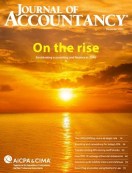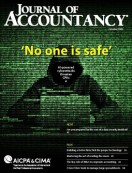- newsletter
- Cpa Insider

Why Roth conversions still make sense after the SECURE Act
Despite the demise of the stretch period, Roth IRAs have advantages.
Please note: This item is from our archives and was published in 2020. It is provided for historical reference. The content may be out of date and links may no longer function.
Related
Look before you leap into a 529 plan
When planning for a natural disaster, don’t forget about your finances
The financial and human cost of loneliness in retirement
With the passing of the Setting Every Community Up for Retirement Enhancement (SECURE) Act, in December 2019, some of the assumptions on which years of retirement planning was executed have been drastically altered. The elimination of the “stretch period” for most nonspouse beneficiaries, along with additional changes, added new wrinkles to the planning process that must be considered by every IRA owner and CPA financial planner. These changes not only altered the effects of past planning, but will also change assumptions around IRA planning for the future. In particular, they alter the decision-making process around whether to make Roth conversions.
How the SECURE Act will affect RMDs from inherited IRAs
Prior to the passage of the SECURE Act (Division O of P.L. 116-94), beneficiaries who inherited IRAs were eligible to “stretch” the period in which they had to take required minimum distributions (RMDs) from those accounts based on their own life expectancy. Many account owners who wanted to maximize assets left to heirs chose to take full advantage of this stretch by bequeathing IRAs to younger individuals to minimize RMD amounts taken by the beneficiary. This strategy allowed the opportunity for maximum growth of the plan assets across multiple generations. In this scenario, assets were able to grow within the plan tax-deferred over the decedent’s lifespan, with additional appreciation while beneficiaries held the plan over their own lifetime, as they were only required to draw minimally on the account via RMDs.
Before the SECURE Act was passed, many individuals who wanted to leave IRAs to heirs and did not require use of the account within their own lifetime also chose to convert their IRAs from traditional to Roth IRAs. While tax is incurred with the conversion, doing this removed the owner’s RMD requirement during their lifetime and secured tax-free distributions for their beneficiaries, thus potentially maximizing their bequest. Account owners executed the conversions expecting that a much longer stretch period would be in place for any future beneficiaries. This longer stretch period allowed for greater potential growth of the funds inside the account over the life of the beneficiaries, yielding a greater benefit from converting.
The SECURE Act, however, eliminated the stretch period and installed a new time period over which the account must be distributed. Now, most nonspouse beneficiaries of inherited IRAs and qualified plans must distribute the account balance within 10 years. In the case of traditional IRAs, these beneficiaries face additional income tax considerations, due to the fact that they will now be taking larger taxable distributions within a compressed time period. For individuals in their prime earning years, navigating how to best draw down the account within 10 years may be challenging, particularly for those with larger accounts.
When Roth conversions still make sense
While the so-called death of the stretch has certainly limited some benefits of a Roth conversion for purposes of bequeathing an IRA to an heir, this planning opportunity remains an effective strategy for many. Scenarios where it makes sense to consider a Roth conversion include instances where taxes on the conversion can be paid with funds outside the account and the account owner will not need to access the account within their own life, or where individuals can make piecemeal conversions over multiple lower income years to convert “cheaply,” taking advantage of lower marginal tax rates.
Another factor advisers should take into account when deciding whether a Roth conversion makes sense is simplifying future decision-making for beneficiaries.
In most cases, absent any past nondeductible contributions, distributions from inherited traditional IRA accounts will be fully taxable to beneficiaries. For large traditional IRAs, determining the most tax-efficient approach to draw down the account may prove challenging. This is especially true for beneficiaries in their prime earning years.
Roth IRA beneficiaries will inherit a much more straightforward tax planning situation than beneficiaries of traditional IRAs. While they will be still subject to the 10-year period limit, their distributions from the account will not be taxable. Most beneficiaries will likely leave the entire balance under the protection of the account for the 10-year period to achieve maximum growth with minimal income tax consequences.
What remains the same about Roth conversions
Though considerations around Roth IRA conversions have changed as a result of the SECURE Act, Roth IRAs still offer advantages to account owners and beneficiaries. Roth IRAs are tax advantaged, and owners of Roth IRAs aren’t required to take RMDs. This can prove helpful in retirement, as it allows a larger amount of assets to remain in the account. Not having to take RMDs can also help account owners avoid creating unwanted taxable income, giving them more flexibility in retirement. Beneficiaries will enjoy a simpler tax situation, versus beneficiaries of traditional IRAs, due to the tax-free nature of their distributions from the account.
Advisers with clients who made Roth conversions prior to the SECURE Act should also exercise care to ensure that any account beneficiaries named as part of the original conversion planning, such as any younger individuals, still make sense in terms of accomplishing planning goals.
The SECURE Act drastically affected IRA planning. Topics such as tax planning for traditional IRA beneficiary distributions, as well as avoiding planning issues during Roth conversions, have been thrust to the forefront. It is imperative for you, the trusted adviser, to have a firm grasp on the new rules and proactively work with clients by helping them update their plans.
— Joseph H. Doerrer, CPA/PFS, MST, is a New Jersey-based tax adviser specializing in serving high-net-worth individuals. He frequently writes and presents on various topics within the areas of tax and financial planning. To comment on this article or to suggest a topic for another article, contact Courtney Vien, a JofA senior editor, at Courtney.Vien@aicpa-cima.com.



















